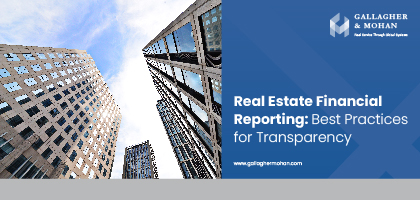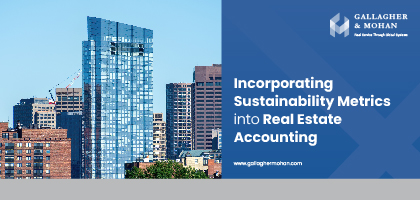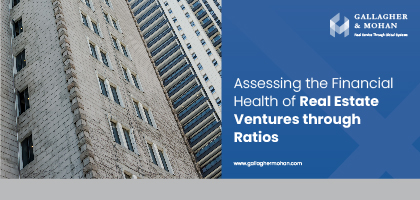27 February 2024
How to Perform a Cash Flow Analysis for Rental Properties
Cash flow analysis is a crucial financial assessment that provides insights into the movement of money in and out of a rental property. Essentially, it involves tracking and evaluating the cash generated by the property through rental income against the various expenditures associated with its operation and ownership. This comprehensive financial tool enables property owners and investors to gauge the profitability and sustainability of their real estate investments over time.
Importance of Cash Flow Analysis for Rental Properties
Understanding and regularly conducting cash flow analysis is paramount for anyone involved in the ownership or management of rental properties. It serves as a financial compass, guiding property owners in making informed decisions that can impact the long-term success of their investments. The importance of cash flow analysis can be highlighted through the following key aspects:
Financial Health Assessment: Cash flow analysis provides a clear picture of the property's financial health. By examining the inflow of rental income and outflow of expenses, property owners can determine whether their investment is generating positive or negative cash flow.
Risk Mitigation: Identifying potential cash flow issues early on allows property owners to proactively address challenges and mitigate risks. Whether it's adjusting rental rates, reducing operating expenses, or exploring financing options, a proactive approach based on cash flow analysis can prevent financial setbacks.
Informed Decision-Making: Investors can make well-informed decisions regarding property acquisitions, expansions, or divestitures by relying on the insights derived from cash flow analysis. It helps in understanding the viability of a property as an investment and aids in strategic planning for future real estate endeavors.
Sustainability and Growth: Positive cash flow is essential for the sustainable growth of a real estate portfolio. By ensuring that income exceeds expenses, property owners can allocate funds for property improvements, debt reduction, or additional investments, fostering long-term financial stability and growth.
In essence, cash flow analysis is not just a financial exercise; it's a proactive strategy for success in the dynamic landscape of rental property ownership. This blog will delve deeper into the intricacies of cash flow analysis, providing practical insights and guidance for optimizing the financial performance of rental properties.
Components of Cash Flow Analysis for Rental Properties
- Rental Income: Rental income is the primary source of cash flow for property owners. It encompasses the total revenue generated from leasing out the property to tenants. Calculating rental income involves considering factors such as the monthly rent, lease terms, and any additional income streams such as parking fees or utility reimbursements.
- Operating Expenses: Operating expenses constitute the various costs associated with the day-to-day operation and maintenance of a rental property. These include property management fees, maintenance and repairs, property taxes, insurance, utilities, and other ongoing costs necessary for the property's functionality and attractiveness to tenants.
- Financing Costs: Financing costs involve the expenses associated with obtaining and servicing a mortgage loan on the property. This includes monthly mortgage payments, interest, and any other financing-related fees. Understanding these costs is vital in determining the overall financial commitment required to sustain the property.
Positive Cash Flow vs. Negative Cash Flow
Positive Cash Flow
Positive cash flow occurs when the rental property generates more income than the total expenses associated with its operation. In other words, the property is profitable, and there is a surplus of cash after covering all costs. Positive cash flow is desirable as it provides financial flexibility and room for property improvements or additional investments.
Negative Cash Flow
Negative cash flow results when the expenses associated with the property exceed the rental income. This scenario is a clear indicator that the property is not generating enough revenue to cover its operational costs. Negative cash flow can lead to financial strain and may necessitate adjustments such as reevaluating rental rates, reducing expenses, or exploring financing alternatives.
Also Read: A Comprehensive Guide to Key Metrics in Real Estate Investment Evaluation
Gathering Financial Information for Cash Flow Analysis for Rental Properties
A. Rental Income
- Determining Rental Rates: Establishing the right rental rates is a crucial step in maximizing rental income. This involves conducting a thorough market analysis to understand the prevailing rental rates in the area. Factors such as property location, amenities, and the current real estate market conditions should be considered. Property owners should strike a balance between competitive pricing and ensuring that rental rates align with the property's unique features and value proposition.
- Accounting for Vacancy Rates: Vacancy rates can significantly impact cash flow. It's essential to account for potential vacancies when calculating rental income. Property owners should be realistic about the time it takes to find new tenants and factor in potential gaps between leases. Understanding and mitigating vacancy risks contribute to a more accurate projection of rental income.
B. Operating Expenses
- Property Management Fees: Property management fees are charges incurred for professional property management services. Property owners who enlist the services of a property management company should account for these fees in their cash flow analysis. These fees typically cover tasks such as tenant screening, rent collection, property maintenance, and general administration.
- Maintenance and Repairs: Regular maintenance and occasional repairs are inevitable costs associated with property ownership. Property owners should budget for ongoing maintenance, such as landscaping and routine inspections, as well as unexpected repairs. A proactive approach to property maintenance can prevent costly issues in the long run.
- Property Taxes and Insurance: Property taxes and insurance are essential components of operating expenses. Property owners need to stay informed about local property tax rates and ensure they have adequate insurance coverage for their rental property. These costs can vary based on location, property value, and insurance policy coverage.
- Utilities: While tenants often cover their utility expenses, property owners may be responsible for certain utilities, such as water, sewage, and garbage. It's important to accurately estimate and account for these costs in the cash flow analysis. Additionally, implementing energy-efficient measures can help reduce utility expenses over time.
C. Financing Costs
- Mortgage Payments: Mortgage payments are a significant part of financing costs. Property owners should clearly understand the terms of their mortgage, including the monthly payment amount, interest rate, and any potential changes in the future. Consistently meeting mortgage obligations is essential for maintaining positive cash flow.
- Interest Rates: Interest rates on the mortgage play a critical role in determining financing costs. Property owners should keep a close eye on interest rate trends and explore opportunities to refinance if favorable conditions arise. Lowering interest rates can positively impact cash flow by reducing the overall cost of financing.
How to Calculate Cash Flow Analysis for Rental Properties
A. Gross Rental Income
Rental Income - Vacancy Loss: Gross rental income represents the total revenue generated by the rental property before deducting any expenses. To calculate gross rental income, property owners start with the total rental income and then subtract any potential vacancy loss. Vacancy loss accounts for the periods when the property is unoccupied and not generating rental income. The formula for Gross Rental Income is:
![]()
Or contact Gallagher & Mohan to do it for you.
B. Net Operating Income (NOI)
Gross Rental Income - Operating Expenses: Net Operating Income (NOI) is a key metric that reflects the property's profitability from its core operations. To calculate NOI, deduct the total operating expenses from the gross rental income. This figure provides a clear picture of the property's operational efficiency and financial performance. The formula for Net Operating Income is:
![]()
Or contact Gallagher & Mohan to do it for you.
C. Cash Flow Before Financing
NOI - Financing Costs: Cash flow before financing represents the surplus or deficit of cash generated by the property before accounting for financing costs. Subtracting financing costs, including mortgage payments and interest, from the NOI gives property owners an indication of the property's cash flow potential before factoring in the impact of financing. The formula for Cash Flow Before Financing is:
![]()
Or contact Gallagher & Mohan to do it for you.
D. Cash Flow After Financing
Considering Mortgage Payments: Cash flow after financing takes into account the impact of mortgage payments on the property's overall cash flow. Subtract the total mortgage payments, including principal and interest, from the cash flow before financing. This final figure represents the actual cash flow available to the property owner after all operating expenses and financing costs have been considered. The formula for Cash Flow After Financing is:

Or contact Gallagher & Mohan to do it for you.
Also Read: Understanding the Importance of Financial Analysis in Real Estate Investments
Tools and Resources to Calculate Cash Flow Analysis for Rental Properties
A. Cash Flow Analysis Spreadsheets
Cash flow analysis spreadsheets are indispensable tools for property owners and investors. These spreadsheets enable users to organize and calculate various financial metrics related to their rental properties. Excel or Google Sheets templates designed for cash flow analysis typically include sections for rental income, operating expenses, financing costs, and cash flow calculations. Leveraging these spreadsheets allows property owners to maintain organized records, perform regular analyses, and make informed financial decisions. Click here to download cash flow analysis spreadsheets.
B. Professional Assistance
Seeking professional assistance from real estate experts, accountants, or financial advisors can be invaluable for property owners navigating the complexities of cash flow analysis. Professionals with expertise in real estate finance can provide personalized insights, help optimize financial strategies, and offer guidance on maximizing cash flow. Accountants can assist with tax implications, and financial advisors can contribute to a holistic financial plan. While utilizing tools is important, professional advice adds a layer of expertise, ensuring that property owners make well-informed decisions aligned with their specific financial goals. Contact Gallagher & Mohan for professional assistance.
Conclusion
Mastering the art of cash flow analysis is essential for anyone involved in the dynamic world of rental property ownership. This comprehensive financial examination goes beyond mere profit and loss, offering a detailed insight into the true financial health of an investment. By understanding and effectively managing the components of cash flow, property owners can make informed decisions to optimize profitability, mitigate risks, and foster long-term sustainability.
The journey begins with a clear definition of cash flow analysis, highlighting its role as a financial compass in guiding property owners through the complexities of real estate investment. Recognizing the importance of this analysis is paramount, emphasizing its role in assessing financial health, mitigating risks, and supporting informed decision-making.
Delving into the intricacies of cash flow, we explored the components that shape this financial metric. From determining rental rates and accounting for vacancy rates to managing operating expenses and financing costs, each element plays a crucial role in the overall cash flow equation. The distinction between positive and negative cash flow serves as a critical benchmark, influencing the financial success and sustainability of a rental property.
In essence, a successful cash flow analysis is not just a one-time task; it's an ongoing process that requires diligence, adaptability, and a commitment to financial transparency. By incorporating the insights and tools outlined in this guide, property owners can confidently navigate the challenges of cash flow management, ultimately ensuring the profitability and sustainability of their rental property investments.



